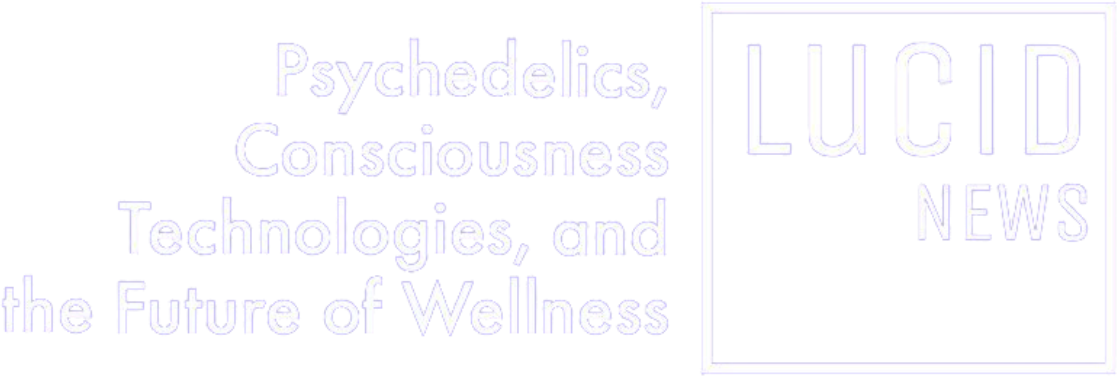Psychedelic Industry and Legacy Meet at Wonderland

Satire alert: This review is written by a comedian.
The Third Annual Wonderland Conference in Miami, Florida just wrapped this past weekend and provided many inspiring and sometimes hilarious insights into the drawn out integration process of psychedelics entering mainstream society. To frame the scene for you, please assume the position I found myself in during one of the numerous conference afterparties:
I’m at a garden party surrounded by high net worth individuals and clout chasers in designer drip, running on six hours of sleep over the last three days while feeling the rhythms and intonations of numerous novel molecules careening through my bloodstream, as I’m handed a pulsating and vibrantly alive microphone to make a speech of some kind that I probably agreed to when the empathogens first kicked in a few hours ago.
This must be how Hunter Biden feels when someone asks him to make a toast at Thanksgiving Dinner.
To stand out in a garden party full of ultra high net worth individuals, your communication strategy must include a reference to Erewhon, an anecdote about something that happened to you in Davos, and unwavering support for Phase 2 clinical trials and top line data involving deuterated psilocybin. If the person talking to you hasn’t heard of either of those words before, and there’s a good chance they haven’t, then you can always talk about the latest real estate investment trust you’re a stakeholder in as a fallback.
If there was ever an appropriate time for me to channel light language and scare the shit out of the psychedelic corporate investor crowd, it would be here and now. But I defer to my often inconvenient sense of diplomacy and start riffing one liners and little anecdotes to placate the wall of eyes and ears before me. I unleash my last incredibly questionable, confidently delivered line to thunderous applause. I kid you not, it was “Let’s solve all of the world’s problems right here, right now.” I guess the ruse worked, or at least the level of narcissism at the party prevented anyone from actually logically decoding my gobbledygook as the facade of bravado and charisma swayed them into adulation again.
The third iteration of the Wonderland Conference was a spectacle with impressive highlights and more than a few bumps in the road on the continuing long, strange trip of psychedelic mainstreaming. This year the conference expanded to incorporate biohacking and longevity, ultimately showcasing the need for our infantilization of psychedelic medicines to branch out and cross-pollinate with other industries as a long term success strategy. The desire to hook longevity clients is a no-brainer from a business perspective; if you manage to do so, you’ve got a customer for the next 180 years.

The other way to achieve longevity is to enter a psychedelic-initiated flow state whereby each minute slows down and elongates, leaving you with a new spatial relationship to time, and ergo more longevity.
The status quo of psychedelic mainstreaming is a far cry from the bull market hype cycle that buttressed the first edition of the Wonderland Conference a few short years ago. Noticeably absent this year were the mainstream celebrities and marquee keynote speakers like Mike Tyson, Bob Parsons, Paul Stamets and Rick Doblin who have graced the stage in person at previous Wonderlands. Whereas what felt like a dozen ketamine companies had booths in previous years, I didn’t register seeing a single clinic with a booth at this year’s conference.
And yet, the conference was one of my personal highlights of the year. I’m willing to bet that numerous other attendees would say the same.
Some two hundred and fifty speakers and panelists converged on Ice Palace Studios to continue trying to market the psychedelic molecules and experiences that have managed to successfully do their own promotion for the last 12 millenia, with the carnival barkers often unintentionally inspiring hilarious satirical plot lines and cementing themselves as experts in an industry that doesn’t technically exist.

The peer-to-peer connections and bonding opportunities that Wonderland afforded cannot be ignored or overlooked, and the smaller size (Somewhere around 1000 people by my estimate) of the conference this year afforded ample one-on-one time and cross-pollinations that weren’t as available in previous years, or at other massive conferences like the 12,000 attendee Psychedelic Science this past summer.
While the day one disorganization – pinned on a venue wide internet outage – caused some headaches and discontent, the curation of speakers and vendors enabled enough networking and brand partnership development opportunities so that such unpredictable haphazardness could be quickly forgiven.
Emcee Shane Mauss was a bright spot throughout the weekend, as he infused the corporadelic conference with his trademark brand of witty, DMT-infused cynicism that managed to be both critical and uplifting to psychedelic culture, as well as the conference itself.
The venue was considerably smaller than the previous year’s expo hall, which allowed for lots of chance encounters with people pulling you in this direction or that. There was ample opportunity for intimate conversations, and to test out the impressive Novobeing VR therapeutic experiences or to sample the Super Mush sex gummies floating around.

The booths on display offered no shortage of product and experience samples, with opportunities to connect directly with brand founders and to dive deeper into educational offerings, such as those available from the FIVE 5-MeO-DMT facilitator training curriculum.
The panel tracks included numerous globally-renowned experts and psychedelic conference circuit mainstays, including Hamilton Morris and Julie Holland, with topics ranging from policy and advocacy initiatives, to “Mind Blowing Intimacy,” to the status of clinical trials across various “psychedelic healing modalities.”
Kudos to the conference for platforming less savory yet critical topics, such as the “How to Navigate Challenging Psychedelic Experiences: What’s the Good Part of a Bad Trip?” panel with Mattha Busby, Zach Leary, Joel Brierre, Phoenix White, and Alli Waddell.
In addition to the expected biotech research and venture fund track, with a predominant focus on clinical use of psychedelics and pragmatic realities like insurance, policy, and investment infrastructure around psychedelic medicines, Wonderland was bold enough to platform a panel called “Notes From the Underground: The Traditional Psychedelic Marketplace and the Future of the Legal Industry.” This panel focused on the “legacy market” of psychedelics, which account for the sourcing of the vast majority of these substances. I was the moderator of this panel, which also included Oakland Hyphae founder Reggie Harris, journalist Mary Carreon, and Mycroboost mushroom supplement founder and Rolling Stone journalist Bob Johnson.
The willingness of a corporate psychedelic conference to platform critical perspectives that overtly center legacy and underground psychedelic culture rather than pay-to-play investor pitches is cause for celebration in this era of bottom-line driven decision making.
Another example of this egalitarian approach to platforming non-financially driven perspectives came from the “Role of the Artist in Election Years” panel. This programming featured a selection of music and entertainment industry professionals, including DJ Paul Nolan and Propeller founder Brandon Deroche, unpacking the importance of artistic expression and advocacy in a turbulent political landscape.

A standout panel was with William Leonard Picard and Simeon Schnapper of JLS Fund, moderated by Microdose and Wonderland president Patrick Moher. The wide reach of the discussion included a comparison of the “psychedelic zeitgeist” of the Congo Basin to that of New York City, with a nuanced approach to preparing for and accommodating the unique challenges and opportunities of each in the development of psychedelic medicine protocols.
One of the biggest impressions that this year’s Wonderland left on me is that the “legacy market” for psychedelics is light years ahead of any emerging legal psychedelic industry.
As Reggie Harris of Oakland Hyphae said during our panel, “When a mom goes on Dr. Phil and tells everyone how much mushrooms are helping her, she’s not getting those mushrooms from a $3500 legal program in Oregon, [she is] going to the underground market.” While clinical psychedelic use dominates the public conversation and media headlines, the decisively non-clinical underground market is stepping up to fulfill nearly all public demand for psychedelics.
Indeed the revolution will not be televised. But it will be productized. Dozens, perhaps hundreds, of intricately branded and professionally dosed legacy market products circulated around the conference and the afterparty circuit. This is the rule rather than the exception at psychedelic conferences, based on my observations across over a dozen of them in six countries this year.

While the emerging psychedelic industry is subjected to glacially-paced bureaucratic policy matrixes and moving goalposts, the legacy market sensibly follows the law of the psychedelic jungle, in which the consumer sets the rules and regulations for the marketplace. Watching “psychedelic industry” hype people citing the latest Phase 2 clinical trial topline data supporting psilocybin as a means of combating depression or DMT being useful for curing foot fungus is analogous to watching people who don’t know shit about psychedelics trying to convince other people who don’t know shit about psychedelics that they know more than the other party does. In the meantime, the rest of us who actually engage with these substances outside of a clinical setting are having a wonderful time watching the ratings on this psychedelic reality television drama plummet while we continue doing what we always have and always will – forming direct relationships with the substances, evaluating their usefulness in our lives, and course-correcting when necessary.
The afterparty circuit took advantage of Miami’s glitz and glitter to deliver some seriously impressive networking backdrops. The standout of the offerings for me were the Ephemera collective party thrown by Swati Sharma and team, as well as the Moksha Arts Center afterparty on Saturday night.
Other highlights from the conference itself included a pavilion dedicated to Miami visionary arts cultural pioneers Moksha Arts Collective, who have been at the vanguard of visionary psychedelic culture in Miami and beyond for over 20 years.
A year’s worth of memorable moments transpired within a few short days in Miami, including (but not limited to):
- Larger than life Rabbi Harry Rozenberg, a truly wonderful and visionary human being with eternal optimism for the future of psychedelic medicine, held an impromptu healing ceremony for an unhoused man outside of the conference grounds, whereby a “psychedelic medicine” vape pen was deployed to combat crack cocaine withdrawals in an encounter publicly shared via video on Harry’s Instagram page.
- The 105 mile “Hike For Heroes” campaign kicked off on the 105th Veterans Day, hoping to raise $105,000 for veteran causes. The hike ran into a rather unusual obstacle immediately, when the group couldn’t find the exit to the Ice Palace Studio venue grounds, and so elected to climb the chain link fence in a patently unorthodox send off.
- A penthouse party atop an enchanting Miami beachfront highrise where friends old and new intermingled while Keith Haring and John Michel Basquiat paintings were live auctioned inside.
- A memorable keynote by Jeremy Gardner of Mystic Ventures that zoomed out for a bigger picture look at the current state of the psychedelic industry, which included memes from Instagram snarklords Supersnake and yours truly.
The road to mainstreaming psychedelics is certainly more Rocky Road than Yellow Brick Road, but the journey continues in a colorful and unexpected way nonetheless.
At the end of the day, much to the chagrin of the psychedelic renaissance, there is in fact no magic pill. There are hundreds of magic pills actually, and my preferred way of engaging with them is to be surrounded by good people and great music, and to share in the laughs and the memories that fate and fortune provide for us on this hairpin twist and turn psychedelic roller coaster we’re all on together.
Featured image: Reggie Harris, Mary Carreon, Bob Johnson and Dennis Walker discuss the state of the underground psychedelic market on their panel “Notes From The Underground.”








